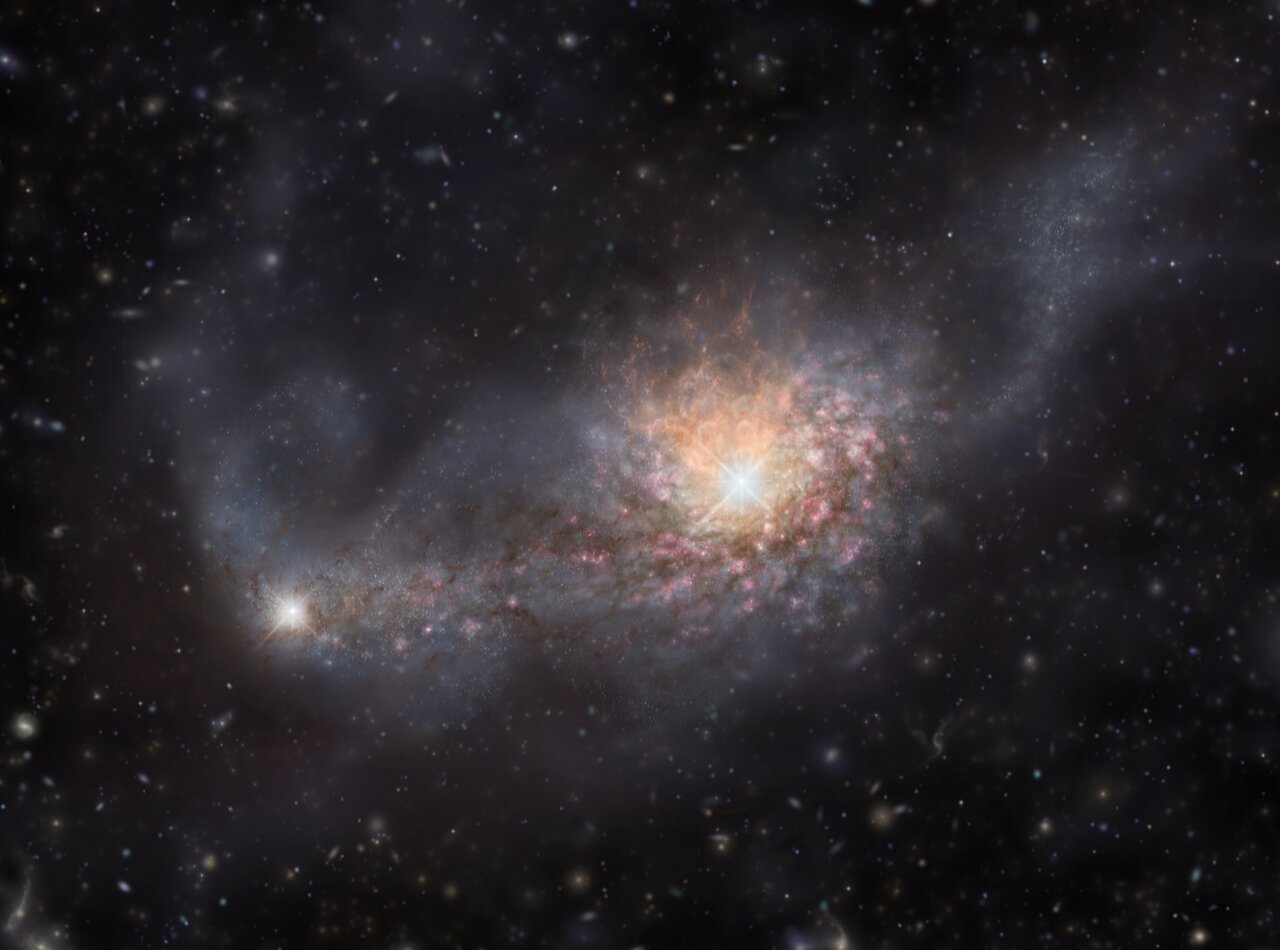Astronomers used the Subaru Optical Telescope and the ALMA antenna array to look at a tiny spot in the starry sky. It turned out they were looking at a galaxy merger that took place 12.8 billion years ago.

Galaxy merger
Astronomers spotted a pair of galaxies in the process of merging 12.8 billion years ago. The characteristics of these galaxies indicate that the merger produces a monster galaxy, one of the brightest types of objects in the Universe.
These results, detailed in The Astrophysical Journal, are important for understanding the early evolution of galaxies and black holes in the early Universe.
Quasars are bright objects powered by matter falling into a supermassive black hole at the center of a galaxy in the early Universe. The most common theory is that when two gas-rich galaxies merge to form one large galaxy, their gravitational interaction causes the gas to fall into a supermassive black hole in one of them, causing quasar activity.
In order to test this theory, an international team of researchers led by Takuma Izum used the ALMA (Atacama Large Millimeter / Submillimeter Array) radio telescope to study the oldest known pair of close quasars.
A pair of quasars in the early Universe
The pair was discovered by Yoshiki Matsuoka of Ehime University in Japan in images taken by the Subaru telescope. Located in the direction of the constellation Virgo, this pair of quasars lived during the first 900 million years of the Universe’s existence.
The pair is dim, indicating that quasars are still in the early stages of their evolution. ALMA observations have mapped the host galaxies of quasars and shown that they are connected by a “bridge” of gas and dust. This suggests that the two galaxies are actually merging.
The ALMA observation also allowed the team to measure the amount of gas, the material for new star formation. The team found that both galaxies were very rich in gas, suggesting that in addition to more quasar activity in the future, the merger would also trigger a rapid increase in star formation, known as a “starburst.”
The combination of stellar and quasar activity is expected to create a super-bright object in the early Universe known as a monster galaxy.
According to phys.org


